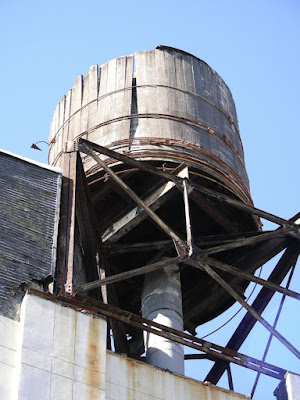“Paris has the Eiffel Tower, Pisa has the Leaning Tower and New York has the water tower," said Andy Rosenwach who manages the family business, Rosenwach Tank Company. We have a fading relic of theirs right in our own backyard.
The business was started on the Lower East Side in 1866 then taken over 30 years later by a Polish immigrant Harris Rosenwach who bought the "lumber, tools and goodwill" for $55. Now 100 years later there are about 10,000 tanks in New York. Why?
It has to do with water pressure. Lowrise coastal cities can often deliver water to higher floors because the cities are at sea level but the source is four or five thousand feet higher in the mountains. If the buildings are low enough, the delivery works the same way as an artesian well.
From Wikipedia:
Got it?
But water pressure created by electric pumps in a highrise increases exponentially, not arithmetically, so if we say a single unit of pressure can deliver to the second floor, it may take 10 times that pressure to get to the third and 100 times that pressure to the fourth, and so on.
At 100 units of pressure on the fourth floor the water works fine, but on the third floor it’s way too powerful and it can be used to cut glass on the second. See the problem? Enter the tanks. The water is pumped up to the roof and held there so the gravity drain-down process ensures everyone in the building has adequate, relatively even service. The higher the building, the more likely this method is used.
Metal is expensive or can rust, plastic doesn’t insulate well against freezing and fiberglas is forbidden by NYC FireCode. Redwood was always the material of choice because it could last half a century but those forests are unsustainable and redwood is now a protected material. A cedar tank lasts 35 years. They are often disguised on the roof with a masonry wrap, left open on top for maintenance.
Cost? A 10,000-gallon tank costs $30,000 and can be dismantled and replaced like a giant barrel in a single working day. The planks are still prepped at a company wood mill in an old stable in Williamsburg, using machines from the 1930s. Click on this picture and check out some very brave guys.









No comments:
Post a Comment